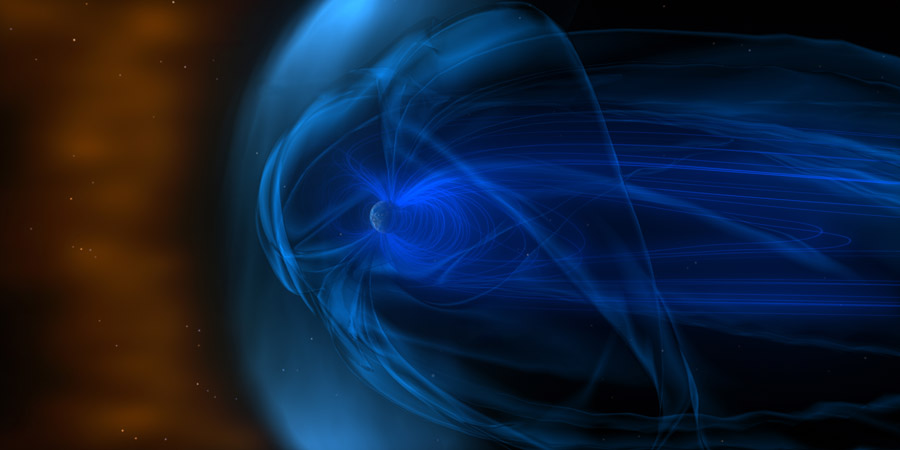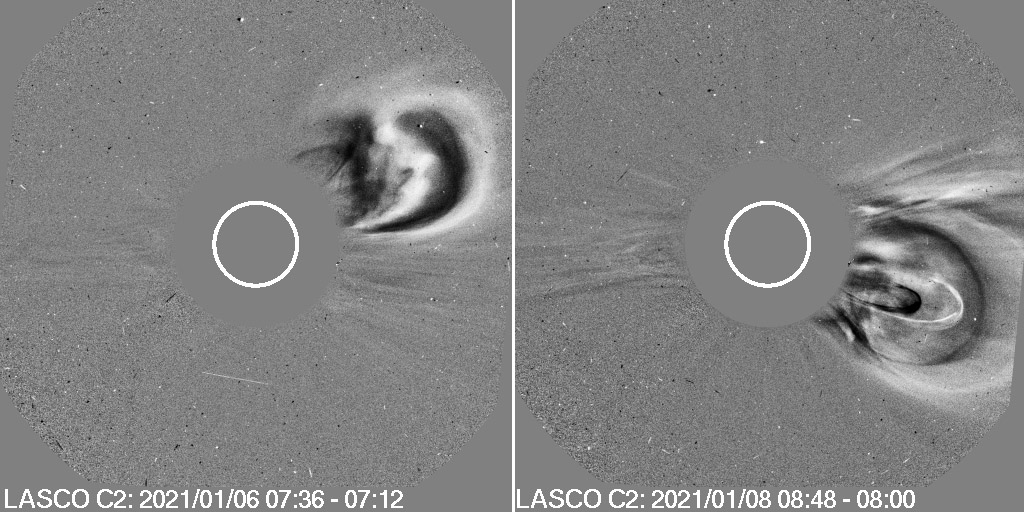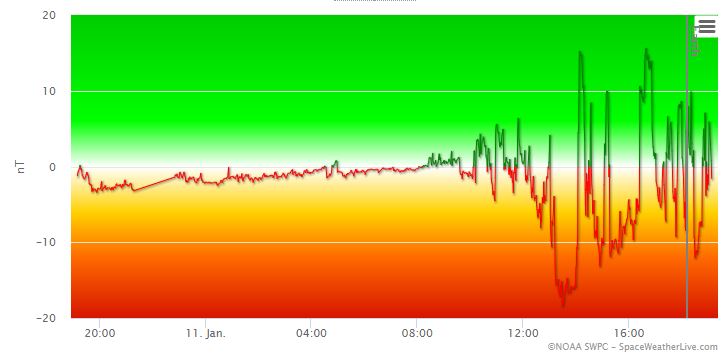Solar wind shock wave arrived at Earth
Monday, 11 January 2021 19:21 UTC

A slow shock wave arrived today around 08:25 UTC at DSCOVR. The source is unclear but it could have come from a filament eruption back on 6 January or one that took place on 8 January. The resulting coronal mass ejections were not expected to arrive at Earth but one of these two eruptions likely grazed our planet today.

The solar wind speed remained slow below 400km/s but the north-south direction of the interplanetary magnetic field (Bz) did drop to near -20nT occasionally which was enough to cause active geomagnetic conditions at 14:59 UTC.

With the current solar wind speed it is unlikely that we will see geomagnetic storm conditions today but high latitude sky watchers should remain alert for occasional auroral outbreaks. If we take a look at our star we see no numbered sunspot regions at the moment. Our Sun is taking a little nap after the sudden outbreak of sunspot regions back in November. It's not all bad news however: we do have a coronal hole slowly rotating into view which we see on STEREO Ahead. This coronal hole should bring us enhanced auroral activity next week.
Thank you for reading this article! Did you have any trouble with the technical terms used in this article? Our help section is the place to be where you can find in-depth articles, a FAQ and a list with common abbreviations. Still puzzled? Just post on our forum where we will help you the best we can!
Latest news
Latest forum messages
Support SpaceWeatherLive.com!
A lot of people come to SpaceWeatherLive to follow the Sun's activity or if there is aurora to be seen, but with more traffic comes higher server costs. Consider a donation if you enjoy SpaceWeatherLive so we can keep the website online!

Space weather facts
| Last X-flare | 2024/03/28 | X1.1 |
| Last M-flare | 2024/04/25 | M1.0 |
| Last geomagnetic storm | 2024/04/19 | Kp7 (G3) |
| Spotless days | |
|---|---|
| Last spotless day | 2022/06/08 |
| Monthly mean Sunspot Number | |
|---|---|
| March 2024 | 104.9 -19.8 |
| Last 30 days | 133.9 +26.6 |


